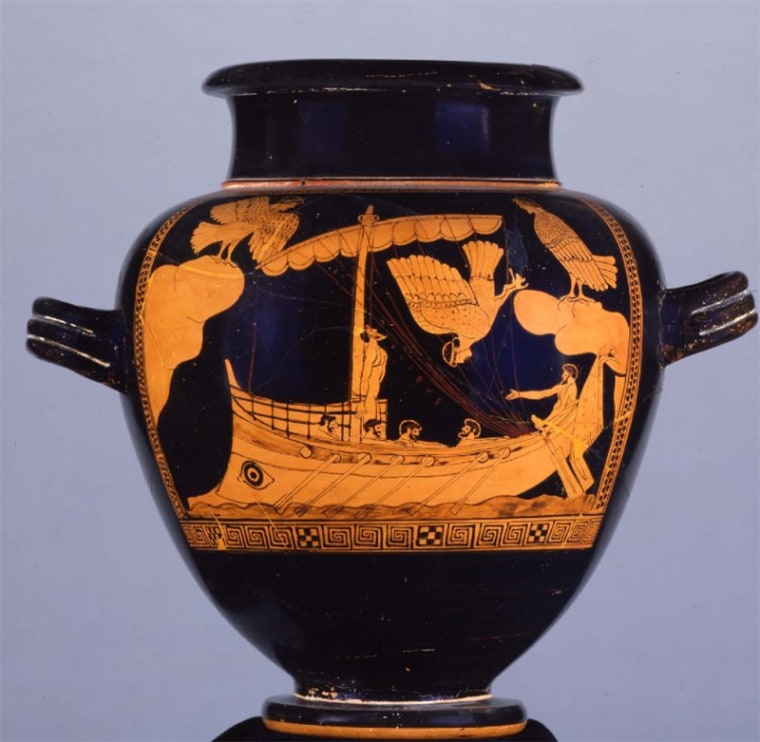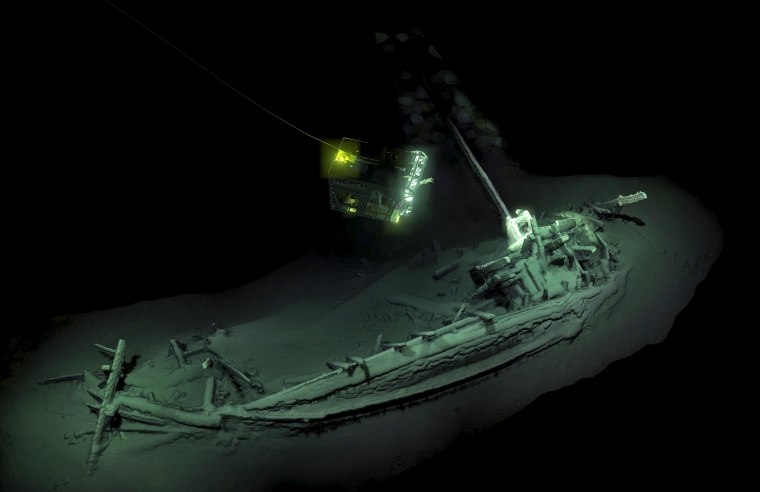With help from some of the world's most advanced deep-diving submersibles, maritime scientists have discovered what they say is the world's oldest intact shipwreck at the bottom of the Black Sea.
Radiocarbon dating shows that the wooden vessel dates to 400 B.C., around the time the Greeks invented the catapult and North America's Olmec culture was dying out. It was found off the coast of Bulgaria in late 2017 after lying undisturbed on the seafloor for more than 2,400 years.
"This will change our understanding of shipbuilding and seafaring in the ancient world," Jon Adams, a professor of archaeology at the University of Southampton in England, said in a statement.
Adams heads the Black Sea Maritime Archaeological Project (Black Sea MAP), the joint Anglo-Bulgarian expedition responsible for the discovery of this shipwreck and scores of others in the region.
The 75-foot-long ship lies partially buried on its side more than a mile below the surface. The water at that depth is mostly free of oxygen, which helps explain why the vessel — including its mast and rowing benches — has remained intact to this day.
"The usual critters that eat wood and other organics elsewhere in the world's oceans cannot live in these anoxic waters, so shipwrecks that drop onto the seafloor are preserved as if they were in the world's biggest pickle jar," Brendan Foley, a marine archaeologist at Sweden's Lund University, told NBC News MACH in an email. Foley has been involved with the discovery of other shipwrecks in the region but wasn't involved in the new discovery.
The oar- and sail-powered ship is thought to be a Greek trading vessel similar to one depicted on a celebrated vase in the British Museum in London. The "Siren Vase," which dates to about 480 B.C., shows Odysseus tied to the mast of his galley as described in Homer's epic poem "The Odyssey."

The newfound shipwreck is too deep to be reached by divers. But the Black Sea MAP's research ship, the Stril Explorer, is equipped with remotely operated vehicles (ROVs) that can do the job. One of the ROVs carries lights and high-definition video cameras as well as a laser scanner and other high-tech instruments.
"The new systems reduce the costs of deep ocean survey and search, and increase the area that can be investigated in a given time," Foley said in the email. "Now it's becoming possible to map an entire basin (think: the whole Black Sea) and discover every shipwreck on the seafloor."
